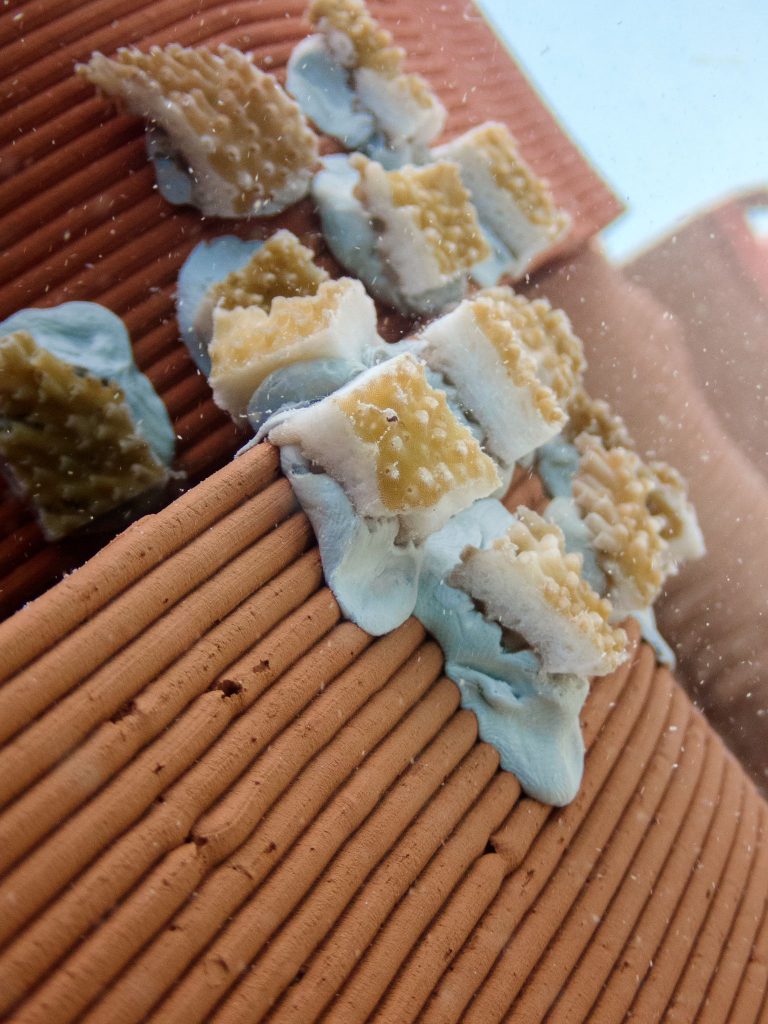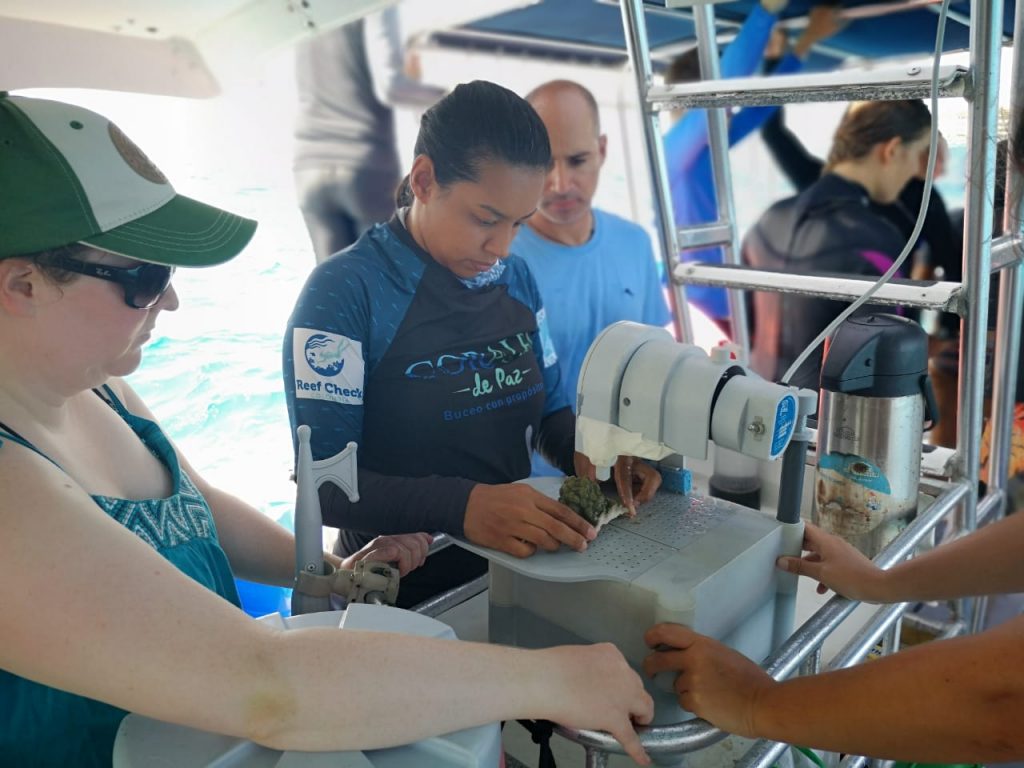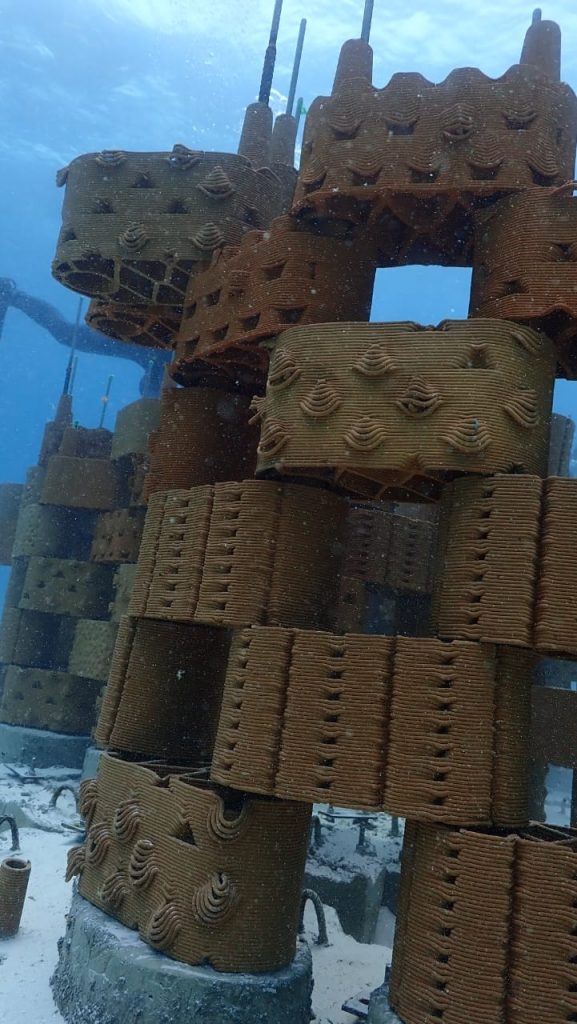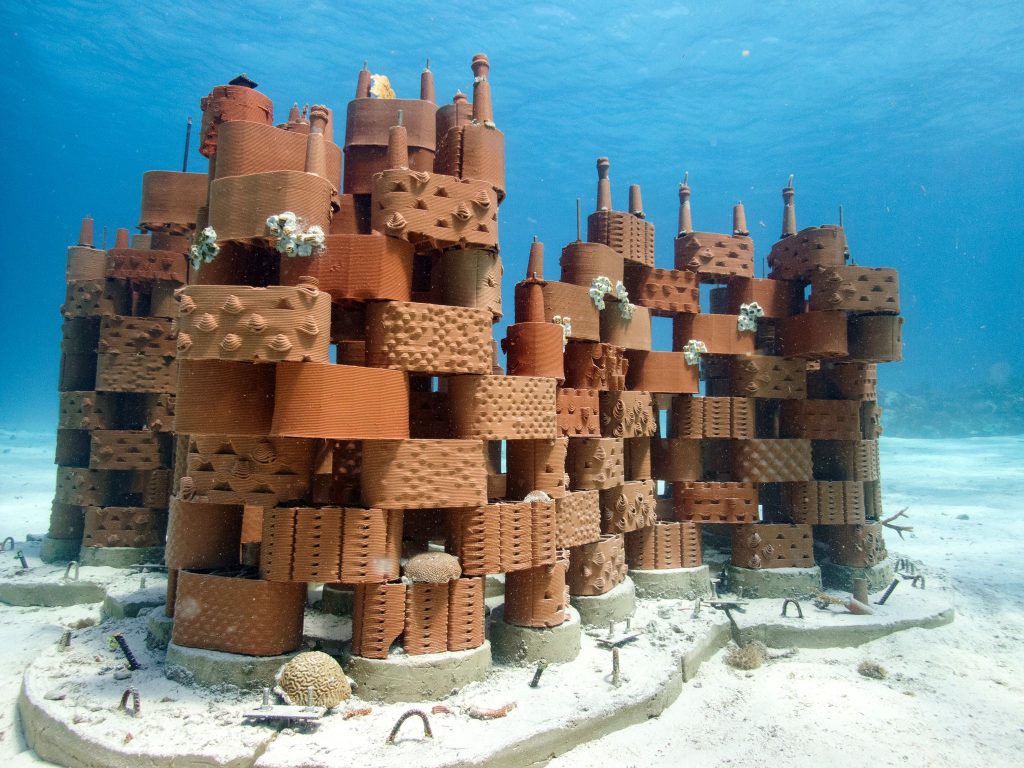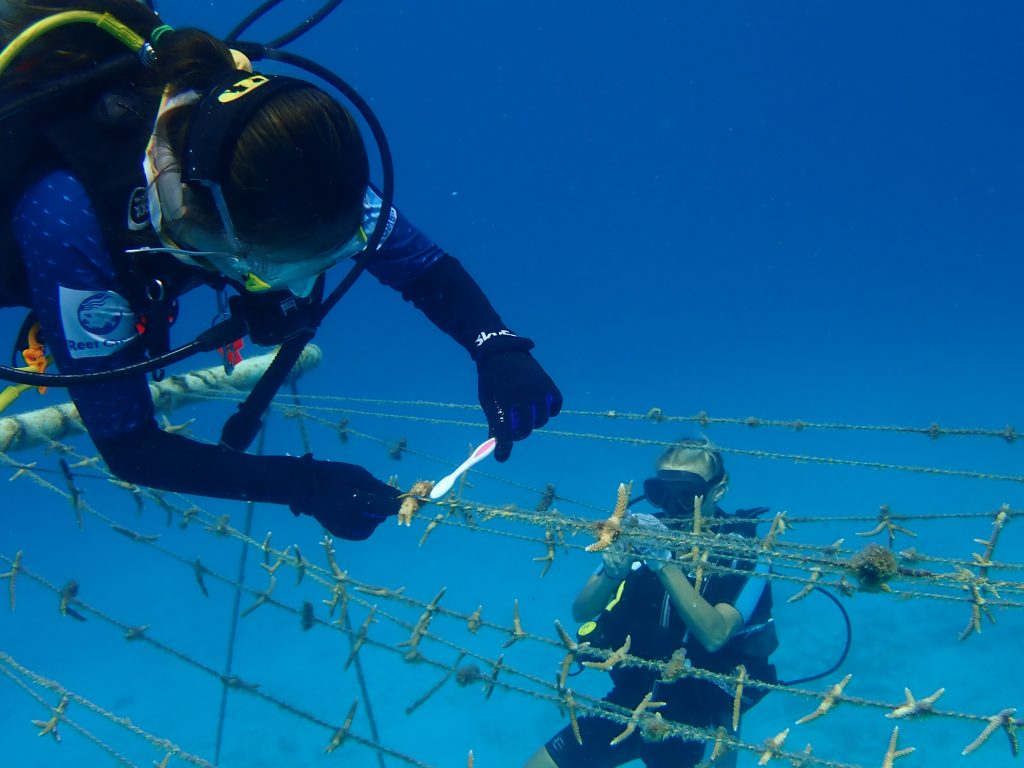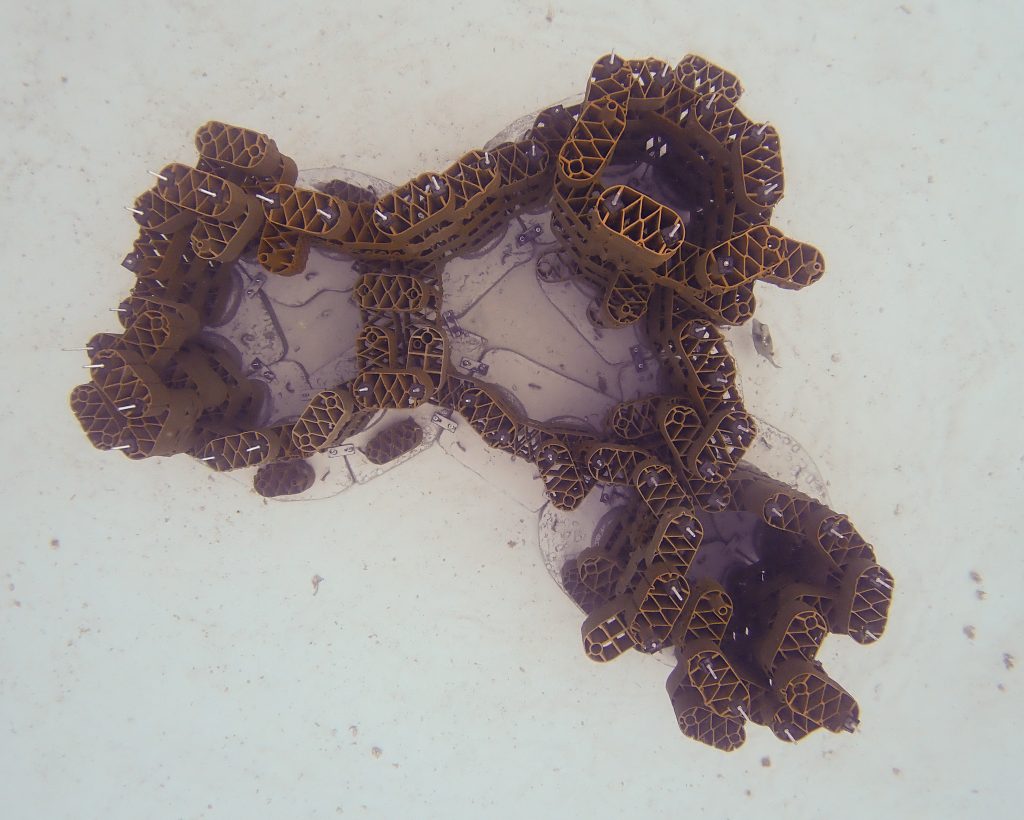My first participation in a Reef-Building Workshop on Living Shorelines: Green Engineering Methods for Coral Reef Rehabilitation in San Andrés, Colombia. 10 fun days packed with interesting lectures, inspiring people from around the world, hands-on scientific dives and the building of the first pilot reef with a 3D-printed brick system made from clay.
Hi – my name is Isabelle. I am Swiss and working in human resources in México City. Since 2018 I am studying Coastal Marine Ecosystem Management – in order to learn more about my passion: the sea and the conservation of marine ecosystems, especially coral reefs, and their inhabitants. Thanks to Corales de Paz and Rrreefs, I was able to do fieldwork at the beautiful destination San Andrés island in the Caribbean and am now writing my thesis about fusing individual bricks with coral microfragments.
I am very happy that a year ago I contacted Dr. Ulrike Pfreundt and Dr. Phanor H. Montoya-Maya, due to my interest in the problem of the Stony Coral Tissue Loss Disease (SCTLD) that is causing degradation of the reefs in Quintana Roo, México (fortunately the SCTLD has not yet reached Colombia). I got to know the extensive and valuable work that Phanor and his team do with Meaningful Diving (i.e. diving with a purpose) and create awareness about the marine ecosystem with their different online training (which I can gladly recommend) and field programs in coral reef restoration. So when later on, the Rrreefs Team and Corales de Paz announced their collaboration on working together on a pilot project – I didn’t hesitate to apply immediately.
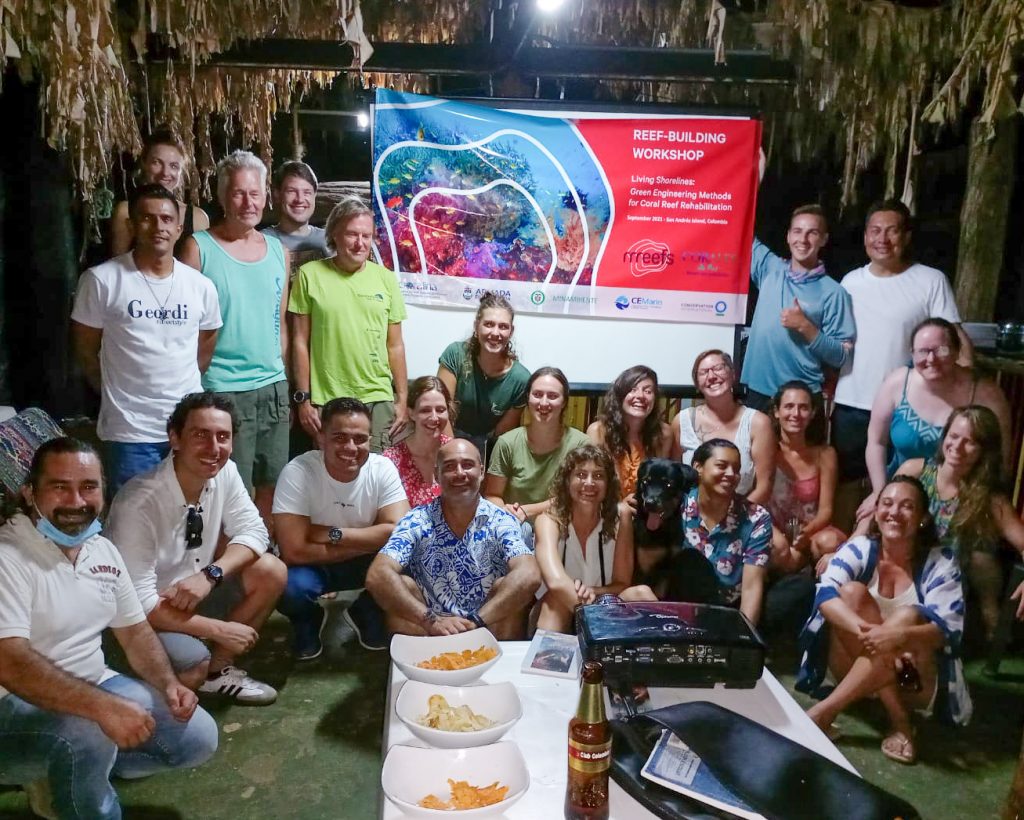
Living Shorelines: Green Engineering Methods for Coral Reef Rehabilitation – Workshop
The Living Shorelines Workshop took place on 10.09. to the 20.09.2021 in San Andrés, Colombia, an island I’ve never heard of before, in the Seaflower Biosphere Reserve. When I arrived at the accommodation Villa Verde, on the south-east part of the island with its beautiful pool, I felt comfortable right away. After the introduction and meeting the other workshop participants, we already had the first interesting lecture session (about Reef Conservation: Rehabilitation Structures) of which more followed during the workshop, e.g. on Reef Ecology, Methods for Active Restoration, Physical processes in coral reef environments, just to name a few.
The 10 days were perfectly organized with a diverse program, including time to do fun dives (14 logged dives), beach clean-ups, and time to have meals/drinks right next to the sea. But of course, the main goal was to deploy the 3D-printed “Lego” brick system.
Within the first days, we had training in scientific underwater exercises such as underwater transport methods, lifting bags, buoys, ropes, preparation of the landing area of the structure, etc. Furthermore, during the next few days, we had the chance to help prepare the anchor reef platform base structure with the help of the Colombian Navy, visit a local Coral Nursery and help Blue Indigo Foundation clean the fragments from algae overgrowth.

Living shorelines workshop group 
Living shorelines workshop group 
Living shorelines workshop group 

Living shorelines workshop group 
Living shorelines workshop group
The context and impact of the workshop
It was intriguing to see the importance of comprehensive stakeholder management to succeed in such a restoration effort. On the island of San Andrés, the various actors from the Ministry of Environment and Sustainable Development, the National Navy, CORALINA, CEMarin, marine biologists, and divers, to the local artisanal fishermen all work together in a partnership. Another highlight was when the platform was deployed in the water, the single platform parts connected and anchored, and everyone could help assemble the bricks (that can be assembled in an infinite number of compositions, creating reefs with customizable shapes, adapted to the natural environment conditions) to the platform. During the last days, we could help make use of active reef restoration approaches such as coral outplanting with cement and fixing micro fragments onto the structure; outplanting techniques perfected by Corales de Paz.
This workshop exceeded all my expectations and created multiple benefits. First of all, the self-sustaining eco-designed artificial coral reef system serves as a coastal protection barrier while promoting the growth of a healthy reef ecosystem by recreating the lost 3D framework of a reef and promoting coral recruitment & providing new habitat. Furthermore, workshops like these help raise awareness on the importance of coral reefs and the actions needed to mitigate coral reef degradation, blending coral reef restoration work and hurricane damage mitigation measures around the island of San Andrés, and last but not least help create an attraction for tourists and meaningful diving.
I would like to say a big THANK YOU to the rrreefs team (Ulrike, Marie & Hanna), Phanor, the Corales de Paz team (Andrea & Angela), and the whole #rrreefers-crew for this incredibly well-coordinated and fun Workshop – Teamwork at its best – and on top of it, we are now all proud holders of Corales de Paz´s Certificate “Reef Repair Diver”.
Looking forward to the next workshop!


